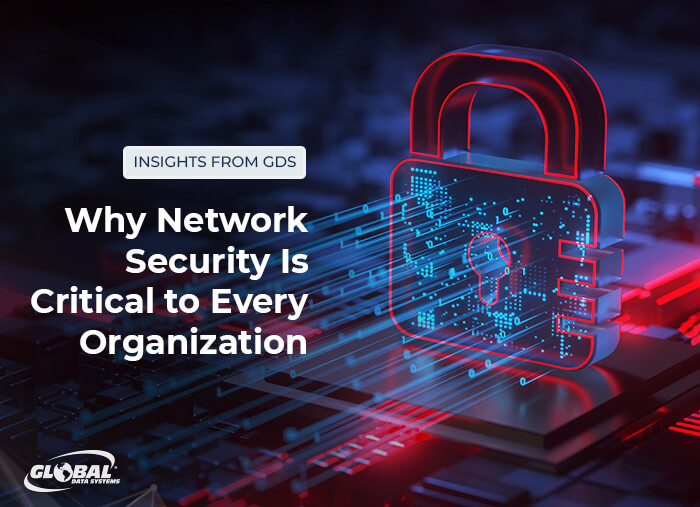In a recent global survey conducted by Dimensional Research, 95% of IT decision-makers reported that their companies have disaster recovery plans. However, only 24% said their plans are up-to-date, well-documented and tested often. Having a plan without disaster recovery testing is a recipe for … well … disaster!
Email has been an essential communication channel for more than 50 years, and that’s not likely to change anytime soon. Despite the proliferation of alternative messaging platforms, global email volumes continue to rise each year. Nearly 350 billion emails are sent and received every day.
The division of labor has been a core principle of economic theory for more than two centuries. Organizations can increase productivity and efficiency by dividing complex jobs into smaller, more specialized tasks. A downside of this model is that it can encourage a “not-my-job” mindset. Individuals often decline to take responsibility for tasks or duties that aren’t explicitly outlined in their job descriptions.
Official approval of the seventh-generation Wi-Fi standard may be more than a year away. However, many organizations are already laying the groundwork for an upgrade. According to a survey by the Wireless Broadband Alliance (WBA), more than one-third of service providers, technology vendors and enterprise organizations plan to begin deploying new Wi-Fi 7 gear by the end of this year.
An early August ransomware attack against a California-based network of healthcare organizations forced hospitals across four states to close their emergency rooms, divert patients to other facilities and take their computer systems offline. The attack on Prospect Medical Holdings is the latest in a concerning escalation of attacks on healthcare and other critical infrastructure sectors.
Global spending on IT security and services will exceed $200 billion this year, with the average organization now devoting more than 20 percent of its IT budget to cybersecurity. However, in their efforts to guard against sophisticated, new threats, too many organizations are neglecting to shore up old, existing vulnerabilities.
No one wants to contemplate a workplace emergency, but illness, injury or even violence can happen at any time. In an emergency, everyone knows to call 911. However, the multiline telephone systems (MLTSs) used in many organizations can make it difficult to get help quickly.
In our last post, we discussed some of the FCC regulations that impact Voice over IP (VoIP) providers. Specifically, providers must pay into the Universal Services Fund (USF) and meet FCC reporting requirements. Some providers that resell VoIP and unified communications (UC) services don’t realize their responsibilities. They face the risk of an FCC audit, which puts their customers at risk of rate increases or service disruptions.
Studies show that more than two-thirds of businesses use an Internet-based voice service such as Voice over IP (VoIP) or unified communications (UC). That number continues to increase. According to Global Market Insights, the VoIP market is expected to see a compound annual growth rate of 10 percent through 2032.
Construction is among the world’s oldest human activities, dating to the Stone Age when our earliest ancestors used stones, wooden poles, straw and animal skins to build shelters. However, 21st-century construction is a decidedly high-tech endeavor.
It’s estimated that more than 90 percent of U.S. businesses use social media to build brand awareness, engage with customers, conduct market research, and increase sales. Naturally, hackers have taken notice.
There’s one sure way to protect computer systems from cyberattacks — disconnect them from the network. Of course, that’s not feasible. Network connectivity is essential to business communications and operational processes.
Malicious software, or malware, is a scourge for computer systems everywhere. Analysts say there are more than 1 billion of these programs in the wild, infecting systems, stealing data and money, corrupting files, compromising identities and more.
A marked reduction in ransomware attacks last year seemed to signal that security teams and law enforcement officials had turned the tide against their cyber adversaries. That optimism was premature. The first half of 2023 has seen record numbers of ransomware attacks featuring much larger ransom demands, shifting data targets, and frequent use of double- and triple-extortion tactics.
The use of renewable biological resources to produce goods, services and energy has become an economic powerhouse. It has created a “bioeconomy” valued at more than $1 trillion and predicted to grow to more than $30 trillion over the next two decades. To accommodate expansion of their operations, bioresources companies are directing technology investments toward improving their cloud and network connectivity capabilities.
Malicious actors have weaponized artificial intelligence to launch attacks with unprecedented scale and frequency. In response, more organizations are fighting fire with fire by leveraging AI and machine learning (ML) to enhance their detection, prevention and response capabilities.
The Internet facilitates a great deal of business activity around the world by enabling communication and data exchange across network boundaries, effectively creating a global marketplace. However, transmitting sensitive information across the public Internet always carries a risk of exposure, which is why most organizations rely upon virtual private networks (VPNs) to create secure connections.
The firewall is an essential first line of network defense, filtering traffic and blocking malicious outsiders from gaining access to your critical systems. Businesses today commonly use multiple firewalls to create a system of protected network segments with varying security needs. In this post, we’ll take a brief look at five primary types of firewalls and the three main implementation models.
A new global study finds that the threat of ransomware remains at “peak levels,” with half of organizations across all sizes, regions and industries falling victim to at least one attack last year. According to Fortinet’s 2023 Global Ransomware Report, most organizations lack a clear strategy for dealing with increasingly sophisticated and aggressive attack variants.
Surveys find that up to 80 percent of organizations now use VoIP (Voice over Internet Protocol) for business communications. That’s not particularly surprising — it’s a proven and reliable technology that has been providing flexible, creative and cost-efficient communication and collaboration options for going on three decades.
We tend to think of cyberattacks as highly sophisticated operations that use complex techniques to bypass layers of digital security measures. In truth, most are stunning in their simplicity, using social engineering tactics to manipulate individuals into divulging confidential or personal information.
Risk management was a classic back-burner issue in many IT organizations for years. Faced with tight budgets, staff shortages and day-to-day deadlines, most were inclined to focus their resources on their immediate needs. However, rapidly expanding attack surfaces are forcing organizations to make risk management a higher priority in 2023.
For decades, information security practices were built around the core theory of “implied trust” — an assumption that users and devices operating inside the network were trustworthy and that any threats would originate outside the network perimeter. That has become a dangerously flawed concept.
Desktop management has always been among the leading challenges facing IT managers, and the job just keeps getting more difficult as workforces become increasingly distributed. The time, expense and effort required to troubleshoot problems, update applications and patch operating systems across remote and office environments is a significant burden for in-house IT teams.
Cybersecurity has become exponentially more difficult over the past few years due to the increased volume and sophistication of threats, a growing attack surface and a global shortage of security professionals. To address this perfect storm of challenges, more organizations are increasing their investments in security operations centers (SOCs).
Cyberattacks by notorious international hacking gangs such as the Lazarus Group, DarkSide, Lapsus$ and the Legion of Doom make headlines and strike fear into everyone responsible for network and data security. As menacing as these groups may sound, Cindy in sales and Eric in engineering likely pose more imminent threats.



























